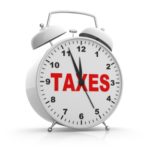Make sure to stay current on auto expense tax rules. The following is guidance from the Internal Revenue Service regarding standard mileage rates:
Standard Mileage Rate – For the current standard mileage rate, refer to Publication 463, Travel, Entertainment, Gift, and Car Expenses or search standard mileage rates on IRS.gov. To use the standard mileage rate, you must own or lease the car and:
- You must not operate five or more cars at the same time, as in a fleet operation,
- You must not have claimed a depreciation deduction for the car using any method other than straight-line,
- You must not have claimed a Section 179 deduction on the car,
- You must not have claimed the special depreciation allowance on the car, and
- You must not have claimed actual expenses after 1997 for a car you lease.
To use the standard mileage rate for a car you own, you must choose to use it in the first year the car is available for use in your business. Then, in later years, you can choose to use the standard mileage rate or actual expenses.
For a car you lease, you must use the standard mileage rate method for the entire lease period (including renewals) if you choose the standard mileage rate.
Actual Expenses – To use the actual expense method, you must determine what it actually costs to operate the car for the portion of the overall use of the car that’s business use. Include gas, oil, repairs, tires, insurance, registration fees, licenses, and depreciation (or lease payments) attributable to the portion of the total miles driven that are business miles.
Note: Other car expenses for parking fees and tolls attributable to business use are separately deductible, whether you use the standard mileage rate or actual expenses.



